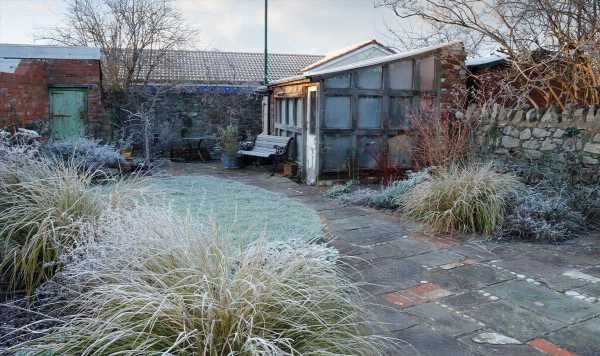UK weather: Met Office forecasts frost and fog patches
We use your sign-up to provide content in ways you’ve consented to and to improve our understanding of you. This may include adverts from us and 3rd parties based on our understanding. You can unsubscribe at any time. More info
As temperatures continue to drop, gardeners need to make preparations in their gardens ready for winter. Certain plants can easily become damaged from cold weather and frost, so it’s best to make these preparations as soon as possible to avoid disappointment.
With this in mind, leading hedging and plant supplier, Hedges Direct, has shared their advice for protecting gardens from frost.
1. Leave fallen foliage
Gardeners have the tendency to remove fallen leaves as they don’t always look the most attractive.
However, the fallen foliage is a great heat insulator and will protect the soil from becoming frozen.
Gardeners can then have a spring clean once the weather warms up next year.
Wildlife also loves leaf bundles as they can use them for nesting sites and protection over the winter months.

2. Brush away the snow
The experts said: “Remove snow where it applies, mostly to the larger, dense evergreen plants that are big enough to gather snow on their foliage.
“You may see small snowflakes falling from the sky and with a blink of an eye, there is a thick layer of snow that has the tendency to make UK residents have a meltdown.
“When collected on foliage, this thick layer of snow will put a large amount of pressure on the plant’s structure and can result in damage to branches.
“Be sure to gently shake the foliage of these plants to remove the collection of snow as this will reduce the combined weight that heavy snowfall can create.”
DON’T MISS
Professional cleaner hasn’t had flies for years due to clever method [INSIGHT]
Fergie and Andrew are taking care of corgis at £30m home – see inside [UPDATE]
‘Best time’ to prune winter-flowering shrubs [ANALYSIS]
3. Watering
It seems redundant to use water to prevent frost but it can actually prevent frost from freezing the soil.
The experts claim adding water when frost is imminent is “vital” and will allow the soil to hold more heat than if the soil was dry.
They added: “Remember that it is just as bad to overwater as it is to under-water your plants.
“Overwatering in these circumstances will be consequential in early spring as doing this allows your plants to be exposed to frost heave.”
Looking for a new home, or just fancy a look? Add your postcode below or visit InYourArea
4. Put a blanket over
Covering tender garden plants in the evening will help them retain heat and protect them from cold and freezing temperatures.
Temperatures tend to drop lower overnight so covering them in the evening is the best time to protect them.
The experts added: “Ensure that covers are removed during the day so they are exposed to sunlight, or else tender plants may suffocate.
“Lift pots and containers inside for protection where felt necessary.”

Individual plants can be wrapped or covered in horticultural fleece, a fleece jacket or hessian.
Gardeners can also invest in protective mats, cloches, a cold frame or even a greenhouse for moveable plants.
Some potted plants can also be brought indoors in the winter months to protect them from cold weather.
Non-hardy container plants include begonias, fuchsias, pelargoniums and eucomis.
Source: Read Full Article
